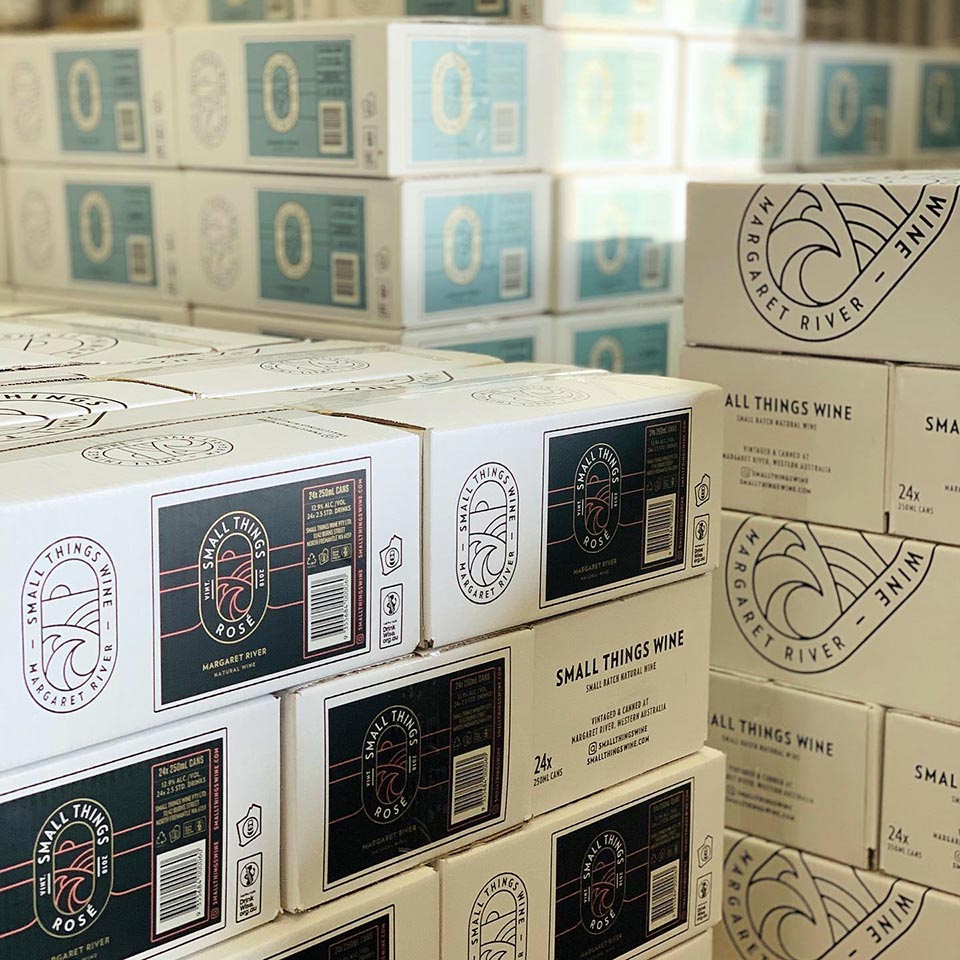
Just over fifty years ago, an Australian winemaker named Thomas Angove filed a patent for bag-in-a-box wine. Many thought it would never catch on, but it did. The concept revolutionized Australian wine drinking, though in Europe bag-in-the-box wines were initially viewed with disdain and suspicion by wine enthusiasts. The thought of wine in cans would have filled many connoisseurs with abject horror.
Today in Britain and America, you can buy a wide range of wines in aluminium cans, or “tins” as the British prefer to call them. This word is a misnomer, because a tin can doesn’t contain any tin. Well, not much anyway. Tin cans are usually made from steel, covered with a microscopically thin coating of tinplate, about 0.00003 inch on each side. These cans are used not for wine, but for products that have a long shelf-life such as canned fish, meats, soup and vegetables.
Tin was first discovered in Anatolia (modern day Turkey) about 3,500 BC. From about 2,000 BC onwards, it was mined in Britain especially in Cornwall. Legend has it that Cornwall was once visited by a tin trader named Joseph of Arimathea, bringing with him the young Jesus. The story is kept alive in the lyrics of the British hymn known as Jerusalem. During the 12th century, Cornwall provided most of the tin for Europe and the industry thrived until the 19th century. Throughout the county you can still see the forlorn, crumbling remains of disused Victorian engine houses and their chimneys.
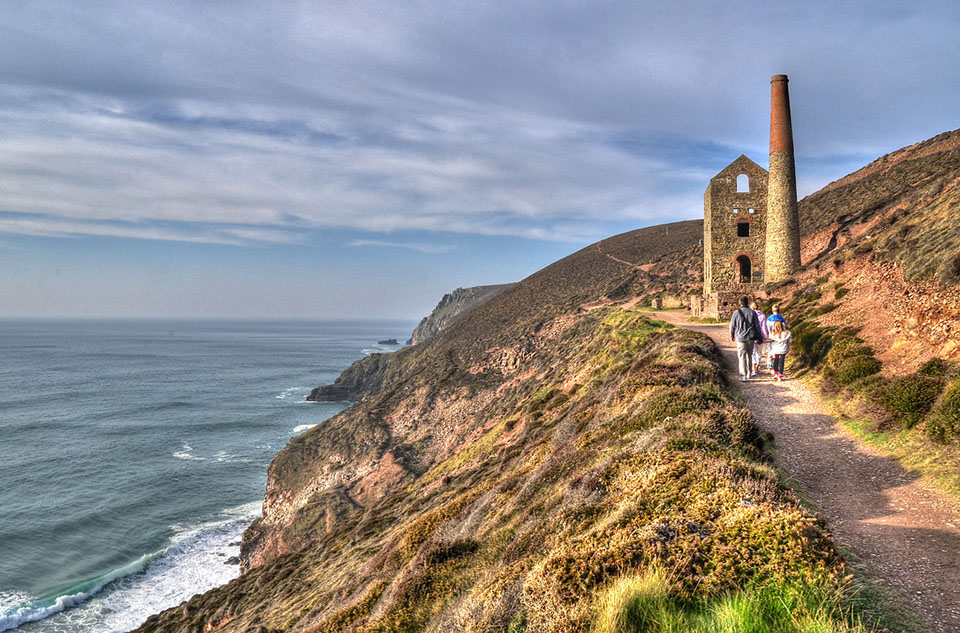
Canned food has been in production since the 19th century but it wasn’t until 1909 that someone at the American Can Company hit on the idea of selling beer in cans. Unfortunately, it didn’t work, because the metal reacted unfavorably with its fizzy contents. Many years were to pass before the problem was resolved. In 1935, canned beer made a successful reappearance in America and it grew in popularity throughout the 1930s. Today, it accounts for about half the sales in the American beer industry.
You might be surprised to know that the first canned wines also appeared in 1935 but like the first attempts at canned beer, they were not successful. The causes were much the same, because chemicals in the wine reacted with the can’s lining, causing it to leak and produce that unpleasant “rotten egg” smell of hydrogen sulphide.
Aluminium came to the rescue. Aluminium (or aluminum, as Americans prefer to call it, omitting the fourth syllable) looks rather like silver, both in its colour and its ability to reflect light. It weighs much less steel and it’s non-magnetic, comparatively soft and can be easily molded. And this is the amazing thing: it’s the twelfth-most common element in the universe.

Aluminium is also the second most abundant metallic element in the Earth’s crust after silicon, yet surprisingly, it wasn’t discovered until the 1820s. It was another couple of decades before a way was found to extract it commercially from its ore, a sedimentary rock known as bauxite. In the 1850s, aluminium was hailed as a “new” precious metal on a par with gold and silver. In his book Periodic Tales, Hugh Aldersey-Williams writes that when Emperor Napoleon III gave banquets, “the most honoured guests were given aluminium cutlery, while the hoi polloi had to make do with silver and gold.”
Twentieth century mass production of aluminium led to its extensive use in industry and everyday life. Sheets of aluminium could be pressed into curved shapes and were used for the constructing cars, buses, railway carriages and aircraft. The use of aluminum cans for food and beverages is relatively recent and began in 1957. The inside of the can is lined by spray coating an epoxy lacquer or polymer to protect the aluminum from being corroded by its contents. Today, the single-use can is the largest consumer of aluminium, with a global production of 180 billion units every year.
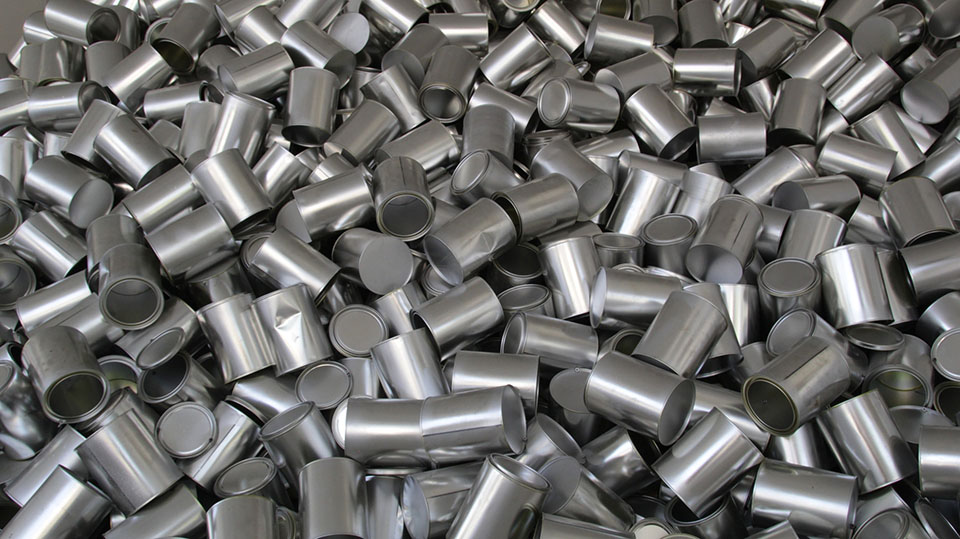
In 1996, the Australian wine producer, Barokes Wines invented and patented a process and product for packaging wine in specially coated aluminium cans. Their globally recognised Vinsafe wine packaging system allows the sealing of premium quality wine in a can to achieve product integrity, stability and longevity for up to five years. The canned wine industry has grown significantly in Australia, New Zealand, the United States and Britain. The American marketing firm Grand View Research reported the global canned wine market in 2021 was about $236 million in sales and forecast that it would exceed $570 million by 2028.
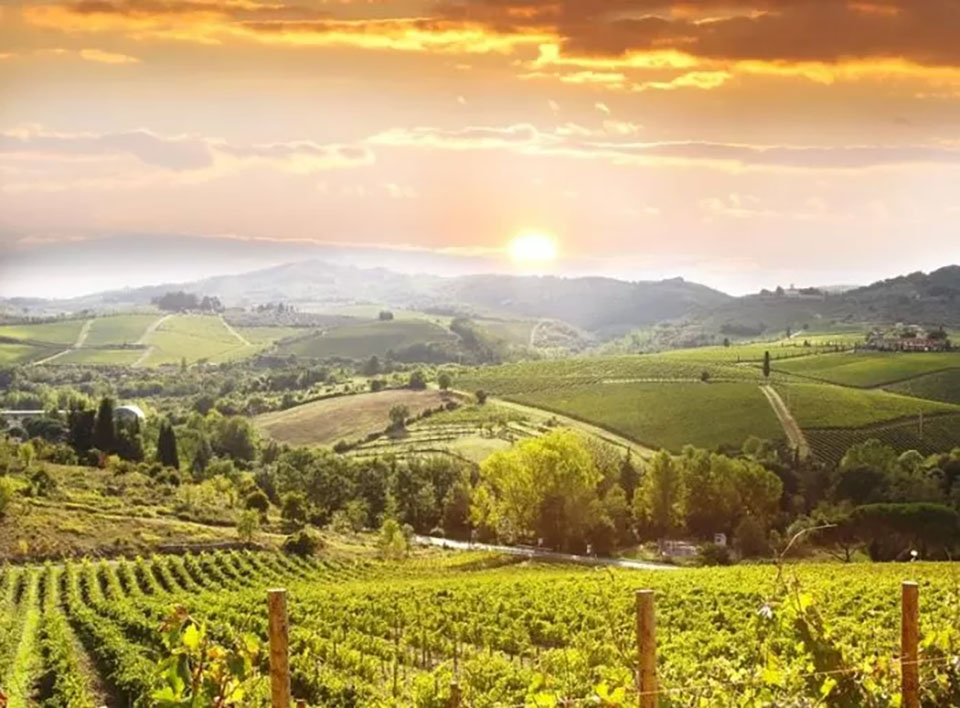
In the UK, canned wine is available in almost every supermarket, and it’s not limited to cheap table wines. An increasing amount of high-end wine is making its way into cans. The Francis Ford Coppola Winery first produced canned wine in 2004 with their Sofia Blanc de Blancs. With each can, the company thoughtfully provided a straw. I am all for wine in cans, but I prefer to drink it from a glass, thank you.
Small Things Sauvignon Blanc (2022), Margaret River, Australia. ฿250.00 (250ml can) @ Wine Connection
As far as I know, canned wine has been unobtainable in Thailand, so I was delighted to discover that Wine Connection now imports a few canned wines from Australia, where sales of canned wine there have doubled over the last six months. Small Things Wine is based in Freemantle and produces a limited but excellent range of premium wines packaged exclusively in 250ml cans. It includes Pinot Noir, Pinot Gris, Prosecco, Chardonnay and a rosé made from 100% Tempranillo. Many of their wines come from the Margaret River region of Western Australia, which lies about 170 miles south of Perth. The company website explains that their wines are natural, low intervention that are unfiltered, vegan and unfined. “Fining” is one of the less-well-known stages of wine production which involves removing unwanted material from wine by using agents such as gelatine or egg-whites. Some wine makers prefer not to fine their wines, believing that the process diminishes the natural flavour, texture and aroma.

Sauvignon Blanc is usually characterized by a herbaceous and assertive “green” aroma, bringing reminders of freshly cut grass, peas or asparagus. Warm climate Sauvignon brings hints of passion fruit, grapefruit and sometimes mango. This example from Small Things is certainly grassy and herbal and it’s blended with 10% Sémillon, a common practice in Bordeaux. It’s a pale gold colour with a distinctive green hue. It has a delicate citrus aroma of lime and pomelo, a hint of dried herbs, along with pear and lemon grass. The wine feels smooth on the palate with zesty lime flavours up front and it’s satisfyingly dry with a lively acidity. At just 12.5% ABV, this wine ticks all the boxes and has a long and rewarding bright finish.
Sauvignon Blanc always goes well with herby sauces and because the wine is light-bodied, it would go splendidly with “light” foods such as chicken, turkey, pork, oysters or smoked salmon. Try it with goat cheeses too, especially soft, flavorful cheeses such as mozzarella di bufala which is available locally at the larger food shops. This wine would match Thai lemon chicken perfectly or any white meat in a rich mushroom and oregano sauce.
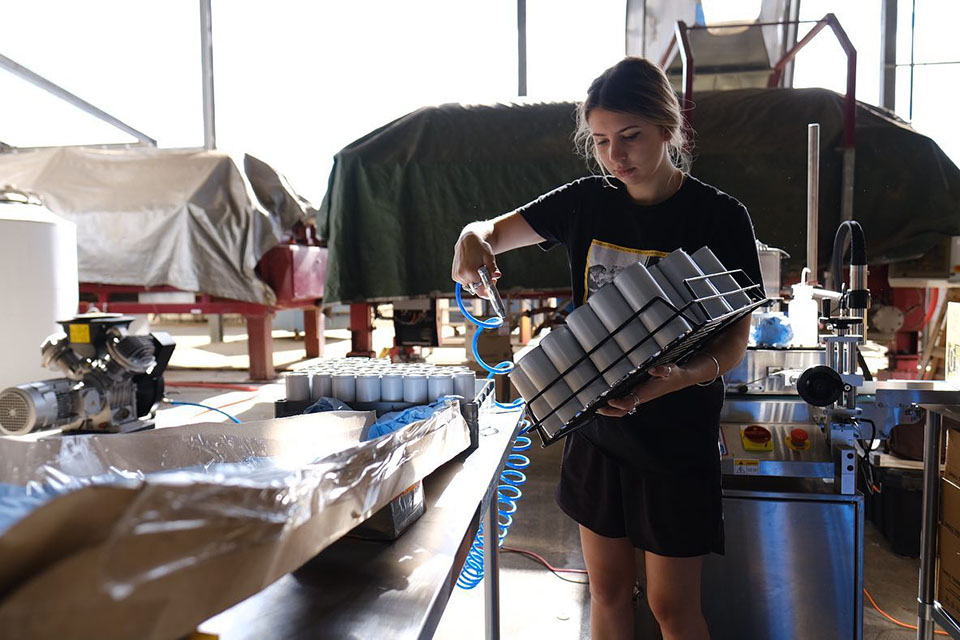
Small Things Shiraz (2022), Frankland River, Australia. ฿250 (250ml can) @ Wine Connection
The spiritual homeland of Shiraz is France, where it’s known as Syrah. To be more precise, it comes from the large area known as the Côtes du Rhône down in the South-East. It’s been grown there for generations and it’s invariably bold, dry, lean and aromatic with hints of spice and pepper. In warm climates the grape can produce lush, fruit-forward wines.
This example is dark crimson and you’ll see thick “legs” appearing on the when you swirl the wine around in the glass. They are sometimes called “tears” and look like oily droplets clinging to the inside of the glass. This is called the Marangoni Effect and usually seen in wines with a high alcohol content, such as this one which is 15.4% ABW. There’s a striking aroma of rich dark fruit, blackberries and plums and a faint hint of raspberry and black pepper. The wine is extremely dry with velvety tannins. Unlike a typical Australian Shiraz, this was not as fruit-forward as I was expecting, but more in the reserved style of a Côtes du Rhône. It’s medium-bodied and assertive with a long, peppery finish. It’s quite a “serious” wine, rather than a party glugger and it would make an excellent partner for rich beef dishes. It needs to be served at near the ambient temperature, even though that’s relatively high in this part of the world. If you cool the wine, you might find that the tannins might become a bit too aggressive.
Incidentally, if you find the expression 250ml rather meaningless, it’s roughly equivalent to 8 fluid ounces, which is enough for a couple of generously filled standard wine glasses. This represents excellent value: genuine Australian wines at an affordable price. And, because it’s canned wine, you can reduce your carbon footprint at the same time.
